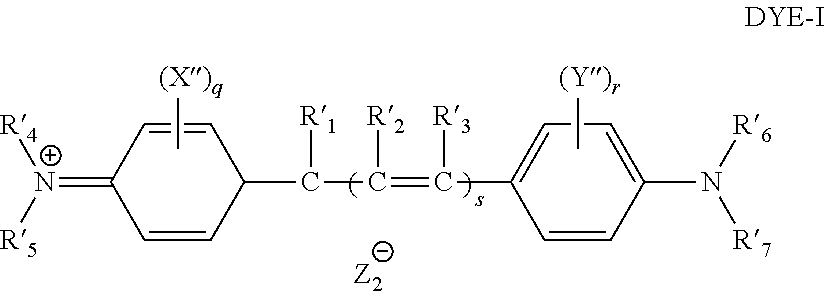Negative-working imageable elements with improved abrasion resistance
a technology of imageable elements and negative working, applied in the field of negative working imageable elements, can solve the problems of affecting the inhibition of free radical photopolymerization, and achieve the effect of influencing the viscosity of coating formulations and increasing the viscosity
- Summary
- Abstract
- Description
- Claims
- Application Information
AI Technical Summary
Benefits of technology
Problems solved by technology
Method used
Image
Examples
examples
[0182]The components and materials used in the examples and analytical methods were as follows. Unless otherwise indicated, the components can be obtained from various commercial sources such as Aldrich Chemical Co. (Milwaukee, Wis.).
[0183]
Aerosil ® 200Fumed hydrophilic silica particles having an average particle sizeof 12 nm available form EVONIK (Germany)Desmodur ® N100Trifunctional isocyanate (biuret of hexamethylene diisocyanate),that is available from Bayer (Germany)HEMA(2-Hydroxyethyl)methacrylateHEPi2-(2-Hydroxyethyl)piperidineHMDIHexamethylene diisocyanateJoncryl ® 683Acrylic resin obtained from SC Johnson & Son Inc. having anacid number of 162 mg KOH / gKayamer PM-2Ester of 1 mol phosphoric acid and 1.5 mol hydroxyethyl-methacrylate that is available from Nippon Kayaku (Japan)Nanopol ® C784Surface-modified silica particles (NanoResins GmbH, Germany),avg. particle size 20 nm, 29 weight % solution in n-butyl acetateNK Ester BPE-500Ethoxylated bisphenol A having methacrylic end ...
PUM
| Property | Measurement | Unit |
|---|---|---|
| particle size | aaaaa | aaaaa |
| weight % | aaaaa | aaaaa |
| particle size | aaaaa | aaaaa |
Abstract
Description
Claims
Application Information
 Login to View More
Login to View More - R&D
- Intellectual Property
- Life Sciences
- Materials
- Tech Scout
- Unparalleled Data Quality
- Higher Quality Content
- 60% Fewer Hallucinations
Browse by: Latest US Patents, China's latest patents, Technical Efficacy Thesaurus, Application Domain, Technology Topic, Popular Technical Reports.
© 2025 PatSnap. All rights reserved.Legal|Privacy policy|Modern Slavery Act Transparency Statement|Sitemap|About US| Contact US: help@patsnap.com



